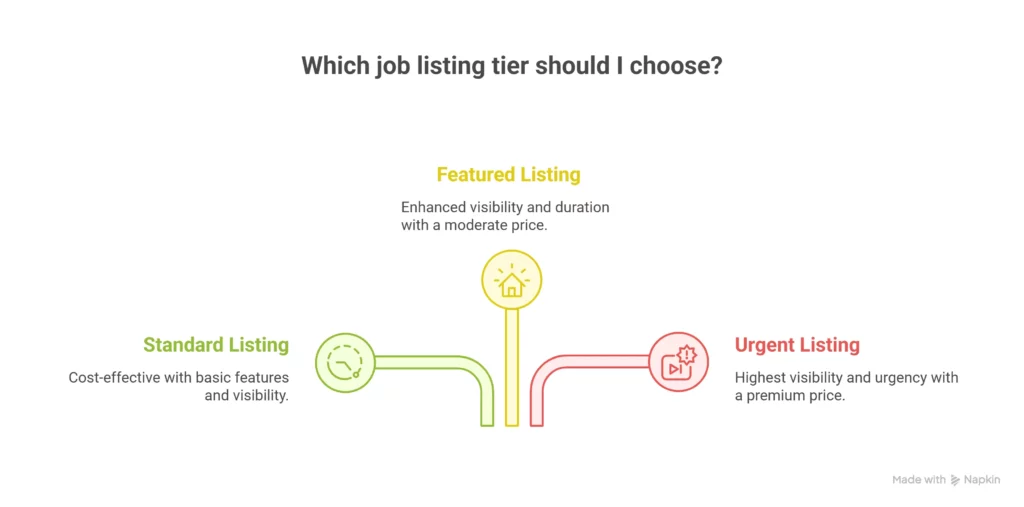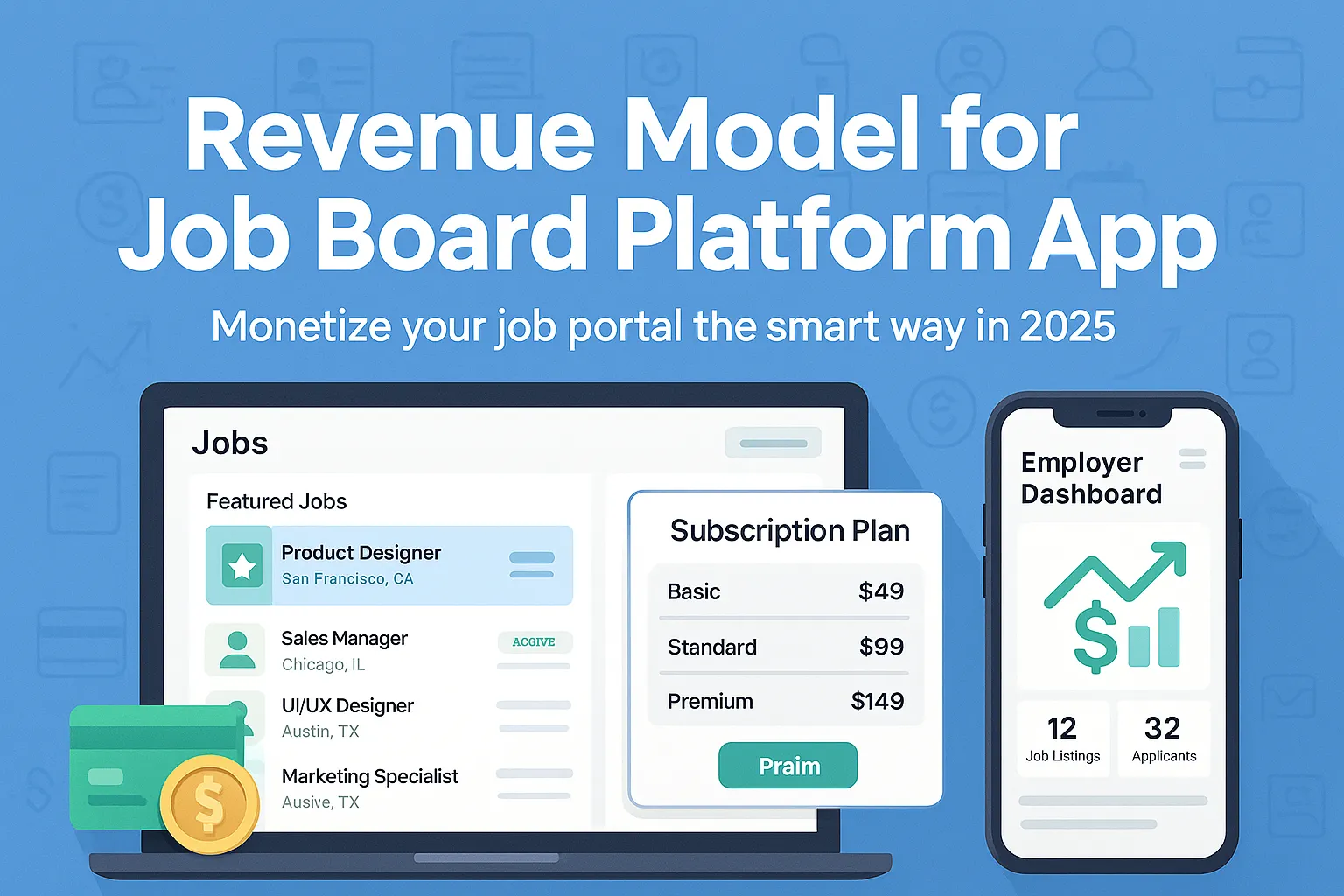Every day, millions of job seekers scroll through job board apps hoping to find that one perfect opportunity. But here’s the twist—while users look for jobs, platform owners are building empires behind the scenes. In 2025, job board platforms are more than just digital classifieds—they’re serious money-making machines, and it’s about time we shine a light on how they actually make bank. If you’re dreaming of launching your own Indeed Clone, this blog might just be your blueprint to success.
A few years ago, a close friend of mine built a job portal targeting blue-collar workers in Tier-2 Indian cities. Guess what? It didn’t just gain traction—it became a cash cow, monetizing faster than any content-based app I’d seen. That experience opened my eyes to the untapped potential in niche job boards and how multiple revenue streams can be stitched into a single, slick app interface.
So, what’s in it for you? Whether you’re an entrepreneur planning to launch an Indeed Clone, or a startup founder trying to monetize your recruitment app, I’ll break down the exact ways you can generate recurring revenue. We’ll look at classic models, smart innovations, and hybrid strategies that leading platforms use to cash in.
Stick around till the end—because we’re not just listing models. We’re dissecting them. From freemium listings to AI-powered premium tools, and everything in between. And yes, we’ll show you how your Indeed Clone app can plug into each one of them like a pro.
Revenue Models for Job Board Platform Apps
1. Paid Job Listings – The Classic Workhorse
This is the OG. Employers pay to list jobs for a fixed period. You can offer:
- Standard Listings (visible for X days)
- Featured Listings (highlighted at the top)
- Urgent/Highlighted tags
Tip for your Indeed Clone: Offer tiered pricing plans based on job category or location.

2. Subscription Plans for Employers
Perfect for recruitment agencies or companies with frequent hiring needs. Instead of paying per post, they get:
- Unlimited listings
- Resume access
- Priority support
SaaS angle alert! Turn your Indeed Clone into a monthly revenue engine.
3. Resume Access Packages
Employers want to browse and download candidate profiles. You can charge for:
- Per resume download
- Monthly resume access packs
- AI-matching & filtered candidate views
Bonus idea: Use token credits instead of currency to gamify resume downloads.
4. Banner Ads and Sponsored Content
Allow brands or training institutes to advertise:
- Course promotions
- Hiring fairs
- Employer branding content
Pro tip: Keep ad placement subtle—focus on relevance.
5. Featured Employers
Want companies to stand out? Offer them:
- A dedicated profile page
- Logo placements
- Employer spotlight blogs/interviews
You can upsell this as part of a premium hiring package in your Indeed Clone.
6. Freemium with In-App Upgrades
Let users post basic jobs for free. Then gently push upgrades like:
- Extended posting time
- Better visibility
- Extra filters
This model works beautifully in hyperlocal or niche job apps.
7. Data Monetization & Insights
With user consent, anonymized data can be gold:
- Salary insights
- Hiring trends
- Industry benchmarks
8. API Access for Aggregators
Charge platforms (like ATS systems or other job boards) to pull listings/resumes via API.
Smart move: Offer tiered API pricing based on call volume or data depth.
Which Revenue Model is Right for You?
Choosing the best model depends on your target audience, app positioning, and goals. Here’s a quick guide:
For Startups
→ Freemium + Paid Upgrades = Fast traction
→ Resume credits = Steady cash flow
For Agencies
→ Subscription + Resume access = Predictable revenue
→ Featured employer = Visibility bonus
For Niche Boards (e.g. tech jobs, healthcare jobs)
→ Sponsored listings + data insights = Laser-focused value
Media Suggestion:
Infographic comparing models by user type and monetization timeline
Challenges to Watch Out For
Running a job board isn’t all sunshine and dollar signs. Here are some real hurdles:
- Spam job listings clog the feed—build strong moderation tools.
- Fake employer accounts ruin credibility—use KYC.
- Low conversion from free to paid—test pricing psychology.
- Data privacy compliance is a must—get your legal ducks in a row.
Conclusion:
There you have it—8 revenue models that are powering the biggest job boards in 2025. You don’t have to pick just one. In fact, the smartest apps use a mix. Your Indeed Clone can become more than just a job search tool—it can be a platform, a marketplace, and a revenue-generating beast.The job tech space is growing fast, with new AI integrations and recruitment automations coming in hot. Get in now, build smart, and you’ll ride the next wave of profitable, purpose-driven platforms. Ready to get started? Contact us here.
FAQs:
Q1. Can I run a job board without charging employers initially?
Yes! Start free, build traction, then monetize with premium features. It’s a proven strategy.
Q2. What’s the most profitable model?
Subscription plans offer consistent income, especially for B2B job boards.
Q3. Do job seekers ever pay?
Rarely. Most monetization focuses on employers. But resume makeover services can be sold to candidates.
Q4. Is data monetization legal?
Yes, with consent and anonymization. Always stay compliant with local data laws.
Q5. Can I integrate ads without ruining UX?
Absolutely. Use native ad formats that match your design and target audience.
Q6. How much should I charge for job listings?
It depends on the niche, location, and visibility options. Benchmark against similar platforms.








